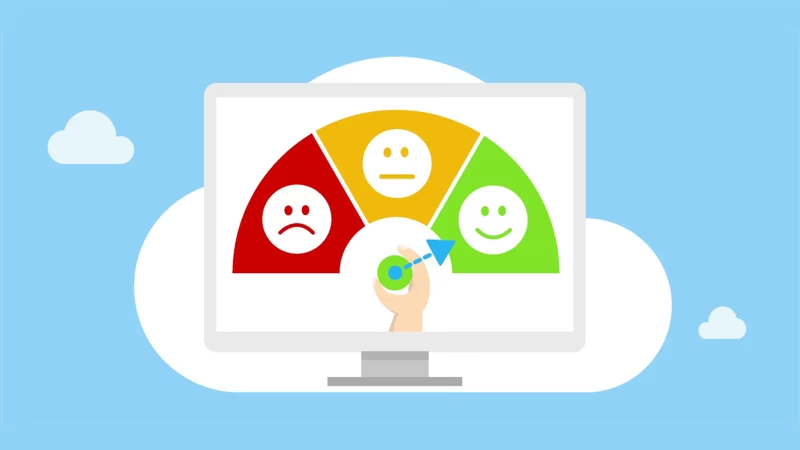In this Article:
- Firstly, what is KPI Analytics
- Getting a buzz from bar charts
- Assembling KPI Analysts
- Challenging Workplace Culture norms
- Experiment for positive change
- Conclusion
From the very moment we feverishly jot down a new business idea or the first time we plop ourselves down in a new project meeting, we trigger something. It goes unnoticed at first, a slow yet consistent trickle of numbers. Still, before long, that unassuming drop of data turns into a torrent of information that becomes the very lifeblood of the thing we're trying to achieve.
If you're like me and have trouble even remembering a short four-digit pin code occasionally – then we couldn't possibly imagine trying to saturate all this information alone.
So to help manage and understand this deluge, we often turn to more efficient ways to cope. We use charts and graphs to visualize the data, eventually transforming it into Key Performance Indicators that align with the goals we're aiming for.
All is good; everything is in harmony, our data is in a state of zen, and we’re propelling towards our goals – well, it's not that simple; you see the data might be managed perfectly; however, we as mere mortals are far from that.
We all like to think when we're looking at trends in a line chart; we are impartially going about our task of identifying the cause or finding opportunities. But we are emotional; we confuse fact over opinion, suffer from confirmation bias, and become influenced by work culture or pressures to make decisions. Sometimes with disastrous results.
But is there a better approach to KPI analysis?, one that can drive positive outcomes, reduce stress, and boost you faster to your goals – maybe, just maybe, you need happy Analytics?
Firstly, what is KPI Analytics
KPI Analytics is the process of objectively examining, transforming, and modeling Key Performance Indicators. The analysis is performed by assessing the performance of KPIs against pre-determined targets and goals. Graphs, charts, and tables are used to visualize the data, helping to discover insights and support decision-making.
Getting a buzz from bar charts
Ok, so we all get a buzz out of different things. For some, it’s the unearthing of an ancient artifact; for others, it’s that eureka moment in film or even when a cake for that one time rises to perfection.
However diverse these buzz drivers are, they all have one thing in common. It’s our evolutionary reward system kicking in.
In the world of KPI Analysis, it’s no different. Sometimes hours of swimming through data can produce no results, but for that one time that the data takes you on a journey to a definitive, unbiased conclusion is worth every second – and a dopamine kick to boot.
Approaching your data from the perspective that the process is part of a more comprehensive reward system - and that it's essentially no different than solving a riddle can help you view KPI analysis as more than just a mundane task.
Learn to love the process.
Assembling KPI Analysts
KPI Analysts aren’t born special; they don’t practice some ancient art best left to planet-sized brains. What they all have in common is they have learned to harness three essential components that make them good and happy doing what they do, none of which are beyond the realms of us ordinary folk but will make your Analysis more enjoyable :
-
They understand where the data comes from
Good Analysts make a habit of knowing their data sources. It seems like a no-brainer to most. However, simply understanding where the data is coming from removes the fear of the unknown. It helps resist the natural urge to become defensive, irritated, and redfaced when we just don’t get something.
-
They try to Process without Bias
It’s sad that the vast majority of us automatically apply some bias in every facet of life. But being able to see or listen to what someone is telling us without our own biases is a skill worth learning. Having this ability allows KPI analysts to discover fresh insights and view data from a multitude of perspectives. Without it, the insights are never accurate. A great example of this in action at the global level - if only they had listened to Konrad Kellen.
-
They know when to stop analyzing
Maybe we should look at this before we do that. Perhaps we need to spend more time getting more data, even breaking it down to the micro-level? There is no end to data analysis. But knowing when to draw the line, conclude, and ultimately make a decision is better (regardless of outcome) than a depressing downward spiral into the data.
Knowing your data, becoming good at letting go of bias, and making confident decisions make happy analysts.
Challenging Workplace Culture norms
It is well documented that positivity in the workplace affects productivity, worker satisfaction, and staff retention.
KPI Analysis is no different; negative workplace cultures promote the use of analytics to apportion blame and fault, in some instances using these data points to terminate workers' contracts.
When analysis comes into contact with toxic workplace cultures, the outcomes are rarely good. Constantly using analysis in this way can lead to negative analysis fatigue, then, in turn, stress and depressed mood levels.
The good news is that change is possible.
Positive analysis takes a step back from the toxicity. Instead of asking who did that, it's why did this happen. How can this data help us to make better decisions, retain our staff and elevate their skills to the levels that benefit the entire organization?
Reap the benefits of positive data analytics, challenge the norm.
Experiment for positive change
The best time to fish is when it's calm. All too often, Analysis is performed after the event, looking at what caused the ripples (or occasional tsunami). The aim (other than to assign fault) is to A. ensure it doesn’t happen again and B. to get back to a stable set of data.
But there is no room to maneuver in this strategy; benefits such as exposing new opportunities, saving costs, or uncovering a competitive advantage are lost. Instead, it’s a ‘stuck in a rut’ approach that only identifies tidal waves after the event.
Admittedly, the concept of creativity and data can seem as they are operating at polar opposites.
But, imagine for a moment setting a challenging set of creative questions before the experimental Analysis that are unrelated to events, for example, are our material costs impacted by annual holiday seasons?. What would be the impact on productivity if we moved to a four-day working week?
The answers may surprise you. So release your creativity and experiment with the data, change formulas, and set aside dedicated time to play.
Conclusion
Happy KPI Analytics is the theory that if you get the right skills, blended with the right attitude, and subsidized with the right data, then great things happen.
- Learn to Love the process, view it as exciting, and get the reward kick.
- Question your own bias, see from different perspectives, and know when to stop analyzing.
- Challenge workplace norms and expectations, power up your positivity, and reap the rewards.
- Let your creativity loose, experiment your heart out.

by Stuart Kinsey
Stuart Kinsey writes on Key Performance Indicators, Dashboards, Marketing, and Business Strategy. He is a co-founder of SimpleKPI and has worked in creative and analytical services for over 25 years. He believes embracing KPIs and visualizing performance is essential for any organization to thrive and grow.
